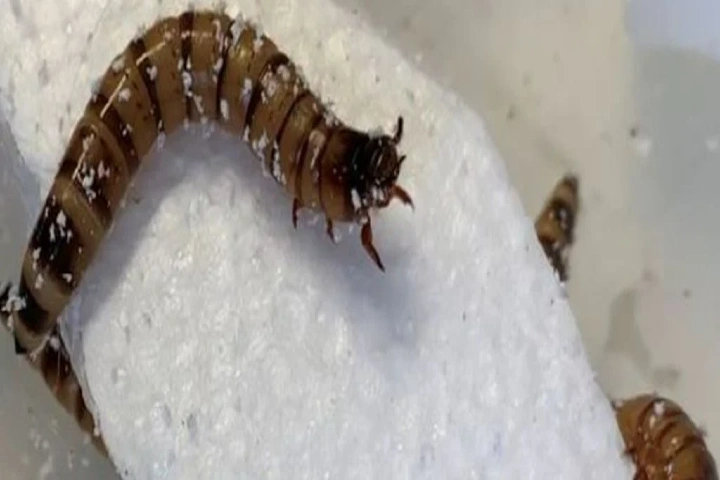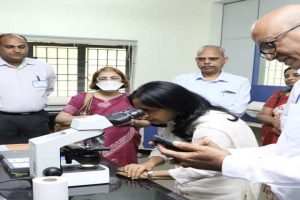The world at large is seized of plastic waste especially those that can’t be recycled. Polystyrene, a form of plastic which is utilised as packing material, disposable cutlery, and cases for CD can’t be reused and that means that it makes its way to the landfills or reaches oceans where it is dangerous for the marine ecosystem.
Fortunately, a solution is in sight as reported in an article in sciencealert.com which talks about a University of Queensland, Australia scientists having found superworms — larvae of Zophobas morio darkling beetles — which eat this plastic and digest them well.
The study of these superworms was published in the journal Microbial Genomics and Chris Rinke who led itm told AFP that in the past mealworms and tiny waxworms had been found that ate plastic well and “so we hypothesized that the much larger superworms can eat even more”.
Growing up to two inches these superworms are grown for birds and reptiles as food and in countries like Mexico and Thailand for human consumption.
In their study, Rinke and his team provided superworms different diets for a period of three weeks. While some were fed polystyrene foam or Styrofoam, others were fed bran and some nothing at all.
Sharing their observation of these worms, Rinke said: "We confirmed that superworms can survive on a sole polystyrene diet, and even gain a small amount of weight – compared to a starvation control group – which suggests that the worms can gain energy from eating polystyrene.”
Superworms which were bred on polystyrene had a normal life, they completed their wheel of life – became pupae to grow into adult beetles. However, on examination it was revealed that their guts had lost microbial diversity and also potential pathogens.
This suggests that although polystyrene is fine for survival it is definitely not a healthy diet and has an impact on the well-being of the worms.
Using metagenomics, the scientists inspected the microbes in the gut to pinpoint the gene-encoded enzymes that degraded the plastic.
The study suggests providing the superworms with food waste or bioproducts of agriculture along with polystyrene to eat. Talking about this Rinke said: “This could be a way to improve the health of the worms and to deal with the large amount of food waste in Western countries.”
A larger number of these worms can be bred for this use but Rinke has an alternate method too. He wants to set up plants for recycling plastic that will imitate what the larvae do – first grate them and then dissolve them using bacterial enzymes. Rinke remarked: “Ultimately, we want to take the superworms out of the equation.”
Going beyond this study, Rinke intends to find out enzymes that are more efficient and using engineering enhance their efficiency further. Products that are broken down from the reaction could then be used to feed other microbes to create high-valued compounds like bioplastics. This Rinke hopes would make the “upcycling” approach economically viable.




















